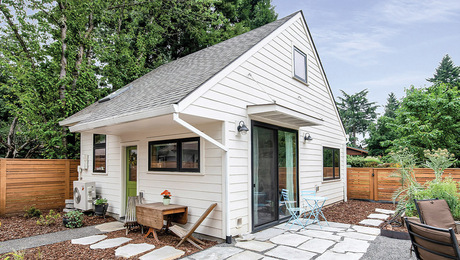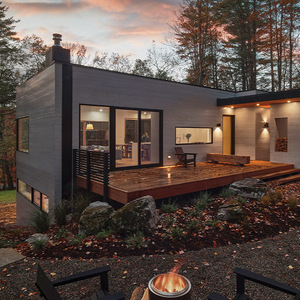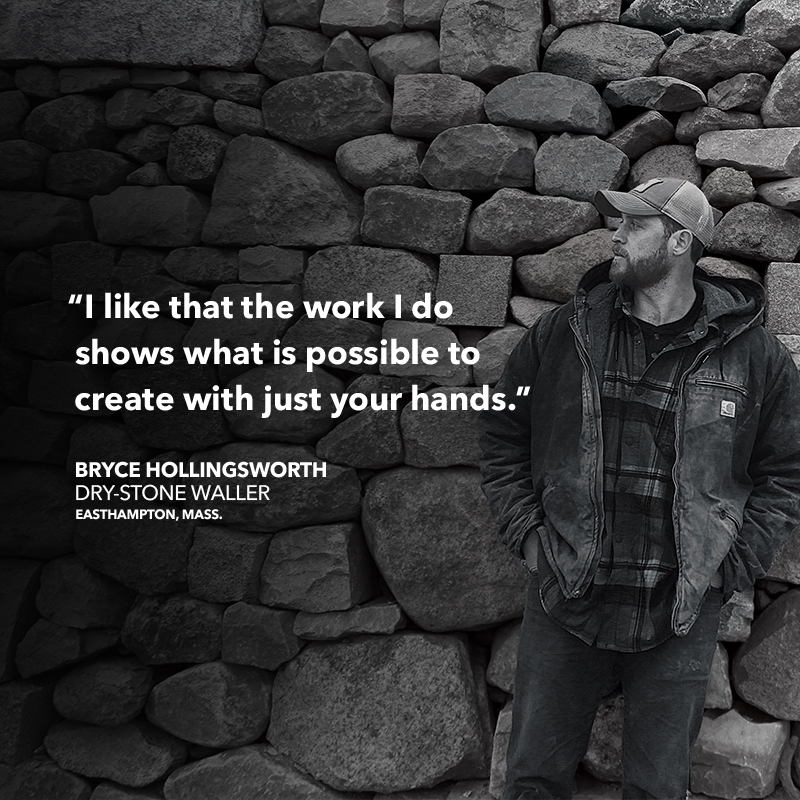Question on siding and window install
I am planning on installing both new construction windows and new siding and could use a bit of advice, just to make sure I am headed in the right direction. Currently my house has masonite siding. My original plan was to remove the siding down to the wood sheathing, install the new windows, wrap the home, and install new Hardie board siding. As it turns out, my house doesn’t have wood sheathing. Installed directly to the framing of the house is foil faced polystyrene insulation with the masonite installed directly over the insulation.
So, given my current situation, what are my best options? Here are the three I’ve come up with, in order of preference:
1) Remove masonite siding, replace with appropriate sheathing over existing polystyrene, wrap house, install new windows, install siding (with appropriate furring strips, etc);
2) Remove masonite and polystyrene, install sheathing, wrap house, install windows, install siding.
3) Leave masonite siding in place,wrap house, install new windows on masonite layer, install new siding.
For the most part, the siding is in okay shape. There is slight water damage on the bottom edge of half the sheets. For the most part the masonite is still relatively flat and has not yet become wavy. My main concern is having a solid structure to nail the new siding into. If I were to install the new siding over the existing masonite, between the new siding and framing would be the polystyrene, the masonite, and furring strip. That’s a good 1.5†which I’m not too thrilled about. I tend to “overdo†just about everything, so of course my preference is to tear everything down to the studs and redo everything properly in order to have a tightly sealed house. Any advice would be appreciated.



















Replies
Just to get you started here, I'll say that I have heard horror stories about masonite growing mold and mushrooms and rotting, so I'd be inclined to get rid of it. Your first plan sounds good to me, but see what others say--how thick is the ploystyrene you have now? Be sure to flash the windows well--Vycor is good.
The polystyrene is 5/8 - 3/4, I haven't actually measured. If I could keep the polystyrene in place, I would like to for the added insulation. One of the things I'm not sure of is whether it is proper to add furring strips directly over the polystyrene. Thanks for you reply.
1 is the way I would go. You probably don't need the sheathing, but is always good to put it on.
Is the masonite siding in 4x8 (?) sheets or is it clapboards?
BTW - be aware that the foil is a vapor barrier.
Ah, forgot to mention that. The side and back of the house is covered in 4x9 sheets while the front of the house is clapboard. Each side of the house will be replaced with the Hardie equivalent. I suppose there is a forth option which I left out. That would be to remove the masonite and attach the furring strip directly over the polystyrene, and then the siding to the furring strips. This would be a bit cheaper that #1 since I would forgo an additional sheathing. Although I should probably look into the local building code to see what the county calls for.Thanks for everyone's replies.
Some questions,
What part of the country are you located in?
Is there insulation in the stud bays?
Assuming a heating,
I'd vote for option #2, then re-install poly over sheathing.... if there's no other insulation.
Geoff
I can't seem to figure out how to reply to multiple posts at the same time (if it's even possible with this particular forum) so I'm going to reply to everyone's message individually. Sorry for spamming the thread, but I appreciate everyone's comments and to make sure everyone's questions were answered.I'm located in Kansas City.2x4 framing with fiberglass batt insulation.Lots of heat and A/C.And the poly over sheathing or under it is really one of my bigger questions. The Hardie siding is pretty heavy and I wasn't sure if I should be worried about the possibility of the poly deforming under the weight of the siding if a sheathing/poly/furring/siding order is used.
>> The side and back of the house is covered in 4x9 sheets while the front of the house is clapboard. Each side of the house will be replaced with the Hardie equivalent. << So, you are going to go back with clapboards on the front and sheet material on the sides and back?
There is some discussion of replacing the entire siding with clap. Those 4x9 sheets of Hardie board are way too heavy. My hunch is that lap would be more time consuming but easier to install due to the weight. FHB recently had an article or two about lap siding, making sure it's level and the reveals are consistent, etc, so I don't think I'll have any trouble.
Builders sometimes (often) put different wall cladding on the front than the sides and back to save money. It's not as attractive though. Even on my own "dream" house I put siding on the back and brick on sides and front just to save money. All the time I see homes with brick only on the front - or even a strip of brick on the front - I hate that look - but I've done that too. Shakes on the front, or only on part of the front like just in a gable end is popular too.
I'd definately have to say though that the T-111 look isn't my favorite. If you can swing $$$ for the siding I'd do it, assuming you would not be over improving for the neighborhood.
If you are doing this yourself, I'd do one side of the house at a time so as not to get too overwhelmed. Really though, a 3 man siding crew is optimum. Six is even better if you are in a hurry.
If you are going it alone, there is a tool for that. (solo siding hanging) Personally, I think I'd buy some pump jacks and walk boards, etc, and then sell them when done.
I would definately remove the masonite siding...sooner or later mold growth will become a problem. I would remove the polystyrene and sheath the house with new wood. I would blow- in insulation into the stud cavities and then install the hardie clap boards. If my budget would allow, I'd install felt or tyvek over the wood sheathing, and then install 3/4 thick furring BEFORE installing the Hardie claps. This constuction is a "rainscreen" and will help eliminate any water and or moisture that may get behind your claps. It will allow your paint job to last a lot longer as well.
Just installing furring strips over the styrene and then installing the claps is... IMHO a very bad move structurally.
Davo
The masonite will more than likely be removed. Regardless of the way the project proceeds, I'm planning on using Tyvek and furring strips to create a rain screen. Seems like the smartest construction method."Just installing furring strips over the styrene and then installing the claps is... IMHO a very bad move structurally."
Thanks for the opinion. My logic side agrees with you but I know it's done by some successfully.
The thing to check is whether the house has bracing in the corners. That would be either wood or metal. If it does there is no real reason to install new sheathing.
Rain screen seems to be nice, but I don't think they are necessary in most areas of the country. The thing with rain screen, is the details. They have to be done right, or they could potentially cause more harm than good.
foil faced polystyrene insulation with the masonite installed directly over the insulation.
Sounds like 1/2" Tuff-R.
Leave it after removing the masonite siding. Tape all the joints and any tares caused by the siding removal with foil tape or a builders tape like Tyvek tape. Spray foam in any penetrations in the foam board.
Remove the old windows and add furring strips around the rough opening to bring the new windows out to plane with new rain screen and hardie siding. Then wrap the walls with building wrap, going over the furring at the windows. Tape all seams in the house wrap and any tares made during installation.
Install the new windows and be sure to detail the head flashing and tape correctly. JLC has an excellent book called Moisture Control, or something like it, that gives good detailed instructions for the correct installation of windows. You may also find instruction on FHB's web site and with the new windows.
After the window install add the furring for the rain screen wall. Again follow the details for the screen wall construction carefully for ventilation and flashing details. Then add the Hardie siding.
Work out all the little details like rake boards and soffit transitions before you start. It is a PITA to find out you forgot to account for something a simple as a frieze board, gutter board, eave rake board after you have started the siding (don't ask how I know).
You have big project ahead of you.
Best of luck with it, and if you get a chance to take pictures as you go along, you could post them here. It would be a great tutorial for many and a future reference for similar questions that come up here quite often.
Dave, thanks for excellent post. I noticed you didn't mention adding any additional sheathing? In you opinion, is it not needed? And good idea on the photos/thread. Once September rolls around and I get started I'll probably do that. If for nothing else, for a great tutorial on how NOT to do it. ;)
We have built many houses with only enough plywood sheating at corners and where ever else required by codes at the time. the rest of the house was sheathed with, in the old days black fiber board, and then in later yeras with foli faced foam. We are not in a highly sizemic area and our wind loads are mild compared to some coastal areas. Shear walls are very seldom seen around here.
Sheathing board does increase the shear strength of your walls, but if your house hasn't suffer from not having it, then why add the expense and time it takes to add it now?
The foam board does have a higher R value than an equal thichkness of wood. If it has the foil side facing out and you add furring strips over it for the siding, you get the air space needed for the screen wall and a radiant barrier.
The use of radiant barriers is a hot button issue here, so let this serve as a fair warning. Others are going to strongly dissagree with me.
My personal experience says it helps. I built two building with steel siding. They are 30' apart on my lot. Both are built exactly the same except one has foil face foam board on it and the other has standard blue foam board. I get marginally more shade on the southern most building than the smaller building north of it. The south Tuff-R (south one) sheathed building stays cooler without running the a/c and it is over 300 sf larger and has an overhead door in it.
Empirical summation, you bet! But I'm paying the utilities on both building. The $$ tell me the radiant barrier impact of the Tuff-R with the air space beats the same building technique without it.
Now guys,.. go ahead,...eat my lunch.
I'm not a contactor, just a fan of FHB. I built with much sucess an addition using an article some time back in FHB. I built usin standard framing. Sheathed with 1/2 cdx, used 1 1/2 foam then screwed furing strips on top of the foam. I then nailed using a roofing nailer my "smart lap" to the furing strips. Smart Lap is a wood-osb product.
The furing strips provide a rain shield which creates an air gap so the wood can dry out if it gets wet.
You had asked about how attach the new siding to the foam
I know the picture is too large, didn't know how to resize it
Thanks for the photo. I've looked into the smart lap/osb siding but for some reason the fiber cement siding is more popular in this part of the country. I know the fiber cement siding is substantially heavier than the smart lab siding so I wasn't sure if the same construction method would work with Hardie lap siding.
I went for smart lap because you need special tools to do fiber cemet